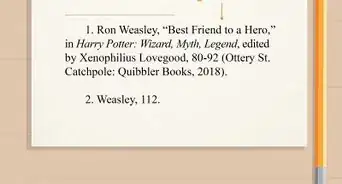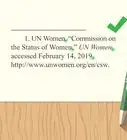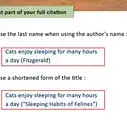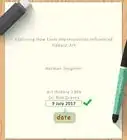This article was co-authored by Rachel Scoggins, PhD. Rachel Scoggins is a Visiting Assistant Professor of English at Lander University. Rachel's work has been presented at the South Atlantic Modern Language Association and the Georgia International Conference on Information Literacy. She received her PhD in Literary Studies from Georgia State University in 2016.
There are 7 references cited in this article, which can be found at the bottom of the page.
wikiHow marks an article as reader-approved once it receives enough positive feedback. In this case, 89% of readers who voted found the article helpful, earning it our reader-approved status.
This article has been viewed 1,359,657 times.
A thoroughly researched paper often supplements written sources with interviews. Interviews generally fall into two categories: published print or broadcast interviews and unpublished personal interviews.[1] Citing an interview may seem confusing if you're used to just citing books and articles, but just like with any MLA citation, follow the simple rules to complete a polished citation.
Steps
Citing Interviews With In-Text Citations
-
1Use only the interviewee's last name when citing personal interviews. Personal interviews are interviews that you have conducted yourself. They have no page number because they have not been published in a book. When you cite a personal interview in the body of your paper, place only the author's last name in parentheses at the end of the sentence.[2]
- Periods go after the parentheses. Think about the parenthetical citation as being part of the sentence. The period goes at the end of the whole sentence, so it goes after the parentheses.
- The superintendent stated that there would be money in the budget for new computers (Jones).
- Emily said, "Training for the Olympics was the most challenging thing I have ever done" (Walker).
-
2Eliminate the parenthetical citation if you use the last name in the sentence. MLA guidelines state that if you state the last name in the sentence, you do not need that same information in the parentheses. The parenthetical information complements, not repeats, the information provided in the sentence.[3]
- Jones stated that there would be money in the budget for new computers.
- Walker said, "Training for the Olympics was the most challenging thing I have ever done."
- The difference between the examples in step 1 and step 2 is the way the last name is presented. In step 1, the last name is in the parenthetical citation because it does not appear in the sentence. In step 2, the last name appears in the sentence, so it does not need to be repeated in a parenthetical citation.
- The reason why the last name must appear in either the sentence or the parenthetical citation is because the last name corresponds to the entry on the works cited page. Every citation must link directly to the works cited page.
Advertisement -
3Give the last name and page number for a print interview. If your interview is printed in a book or other print source, provide the author's last name and the page number. You cite this just like you would any book or journal.[4]
- Emily trained so hard that she bruised her foot and had to take a break (Walker 45).
- Walker explained that she had to take a break from training after bruising her foot (45).
- Remember, MLA does not put a comma between the last name and the page number in a parenthetical citation.
-
4Place short quotations from interviews in quotation marks. Short quotations are no longer than four typed lines. When you cite short quotations from an interview, enclose the directly quoted words in quotation marks. Place the parentheses after the closing quotation mark but before the period.[5]
- If a quotation ends with an exclamation point or a question mark, place it inside the quotation marks.
- Dr. James Hill said, "The virus starts by affecting the brain" (56).
- Dr. James Hill asked, "If we can't find a cure, how will we save the human race?" (57).
-
5Format long quotations with a block quote. Long quotations are longer than four typed lines. When you cite a direct quote from an interview this long, you must place it into a block quote. Do not put quotation marks around the quoted words. Instead, the words will be freestanding from the rest of the paragraph. Start the quotation on a new line after placing a colon after the lead-in text, instead of the comma like for short quotations. The entire quote will be indented one inch from the margin. The parentheses come after the punctuation, unlike in short quotations.[6]
- Start your block quote like this: In an interview from 2002, Peter Jackson stated:
- Punctuate the end of your block quote like this: Jackson said he will always keep making movies. (34-35)
Citing Interviews on a Works Cited Page
-
1Start a personal interview citation with the interviewee's last name. On the works cited page, start the citation entry with the last name of the interviewee. After the last name, add a comma and then the interviewee's first name. Directly after the first name, insert a period. Then, include the type of interview followed by a period. Add the date of the interview followed by a period.[7]
- Dates should be formatted with the numerical value for the day, followed by the three letter abbreviation for the date followed by a period, and then the numerical value for the year. Most months just use the first three letters of their name. May has no period after the three letters. June and July both stay the same with no period afterwards. September is abbreviated using 4 letters: Sept.
- For type of interview, state if it is a personal, telephone, or e-mail interview.
- Example: Gambill, Mike. Telephone interview. 1 Apr. 2003.
-
2Include title of the collection for published interviews. Published interviews include both print and broadcast outlets. If the interview is part of a larger work like a book or TV program, the title of the interview should be included in the citation, along with the medium of the interview (print, web, DVD). The title of the interview goes in quotation marks and the title of the book/TV show should go in italics.
- For an interview published in a print source, start with the interviewee's last name, followed by a comma and then the first name. Add a period. Place the name of the interview in quotation marks, with a period inside the quotation marks. Next, list the name of the larger book or journal where the interview was published in italics. Add a period. Next, give the author or editor of the book by stating "By First Name Last Name" or "Ed. First Name Last Name." Add a period. Then finish the citation with information required by the medium.
- Amis, Kingsley. “Mimic and Moralist.” Interviews with Britain's Angry Young Men. By Dale Salwak. San Bernardino: Borgo, 1984. 34-47. Print.[8]
- Blanchett, Cate. "In Character with Cate Blanchett." Notes on a Scandal. Dir. Richard Eyre. Fox Searchlight, 2006. DVD.
- If the interview has no name, just type the word "Interview" without any quotation marks or italics.
- Jolie, Angelina. Interview. 60 Minutes. CBS. WCBS, New York: 3 Feb. 2009. Television.[9]
-
3Cite online-only published interviews like a standard web entry. Online-only interviews are cited just like standard web entries. In place of the author, list the interviewee, starting with the last name. If the interview has a title, put it in quotation marks. Place the name of the website in italics, give the publisher name, publication date, the medium of the publication (web), and the date you accessed it.[10]
- If no publisher is given, insert the abbreviation n.p. If there is no publication date, use n.d.
- If the interview does not feature a title, add the descriptor "Interview" after the interviewee's name with no italics or quotation marks.
- Obama, Michelle. Interview by Caren Zucker. ABC News. ABC, 2009. Web. 19 Apr. 2009.
- Antin, David. "The Way I See It." Dalkey Archive Press. Dalkey Archive P, n.d. Web. 21 Aug 2007.
Sample MLA Citation
Community Q&A
-
QuestionHow do I cite an anonymous source?
 Community AnswerCite the source (article, website, etc) normally, but use "anonymous" in place of the author's name. Or if the name is simply not listed (rather than saying "Anonymous"), you can just exclude the name part entirely.
Community AnswerCite the source (article, website, etc) normally, but use "anonymous" in place of the author's name. Or if the name is simply not listed (rather than saying "Anonymous"), you can just exclude the name part entirely. -
QuestionWhat if I conduct more than one personal interview? Do I include the interview date in the in-text citation?
 Community AnswerOnly if you think it would matter. As long as you cite the person interviewed, it’s enough information to give readers a good idea of where the info came from.
Community AnswerOnly if you think it would matter. As long as you cite the person interviewed, it’s enough information to give readers a good idea of where the info came from.
References
- ↑ https://owl.purdue.edu/owl/research_and_citation/mla_style/mla_formatting_and_style_guide/mla_works_cited_other_common_sources.html
- ↑ https://columbiacollege-ca.libguides.com/MLA9/interviews
- ↑ https://columbiacollege-ca.libguides.com/MLA9/interviews
- ↑ https://owl.purdue.edu/owl/research_and_citation/mla_style/mla_formatting_and_style_guide/mla_works_cited_other_common_sources.html
- ↑ https://columbiacollege-ca.libguides.com/MLA9/interviews
- ↑ https://owl.purdue.edu/owl/research_and_citation/mla_style/mla_formatting_and_style_guide/mla_formatting_quotations.html
- ↑ https://guides.library.unr.edu/mlacitation/personalcommunication
- ↑ https://owl.english.purdue.edu/owl/owlprint/747/
- ↑ http://www.bibme.org/citation-guide/MLA/interview
About This Article
To cite an interview in MLA format, include the interviewee’s last name in parentheses after quoting it, making sure to put any punctuation outside of the parentheses. However, if you state the person’s last name in the sentence, you don’t need to include a citation in parentheses. If you’re citing a printed interview, add the page number after the name in the citation. Finally, include the citation on your “Works Cited” page by listing the interviewee’s last name, the type of interview, and the date of the interview, each separated by a period. To learn how to format a longer quote from an interview, keep reading.
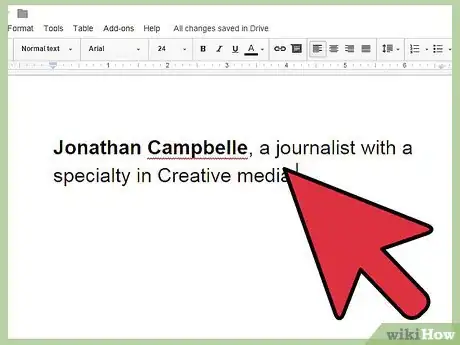
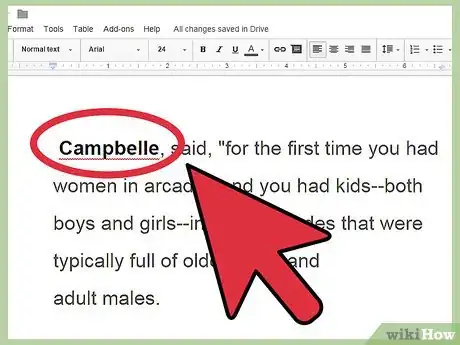
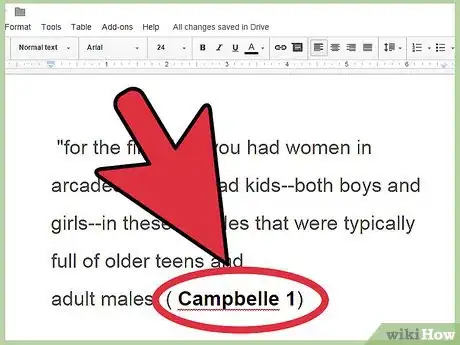
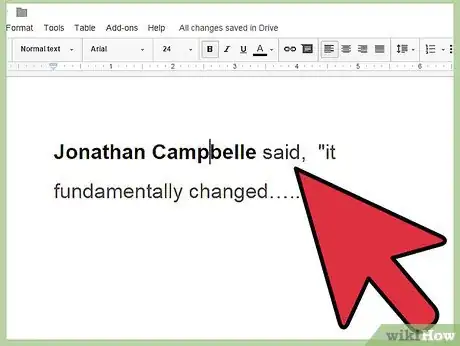
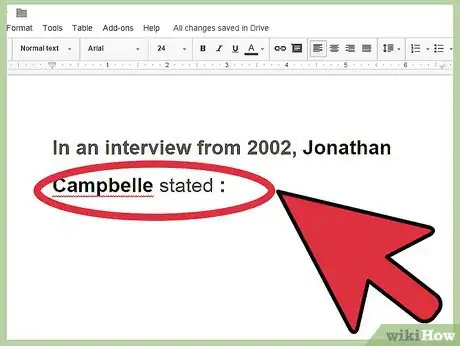

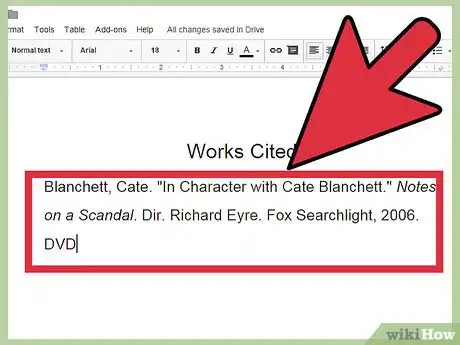
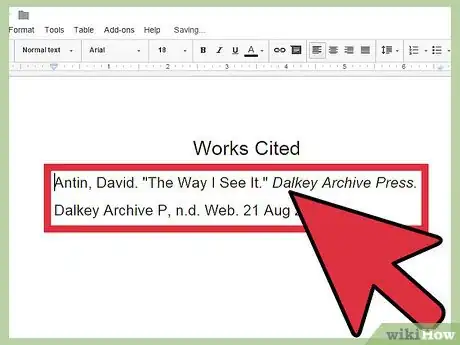

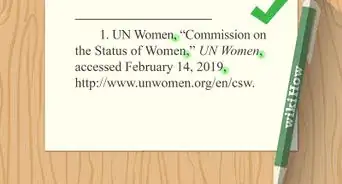
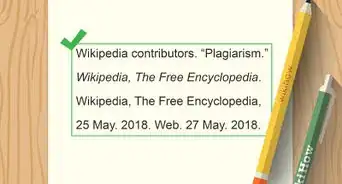
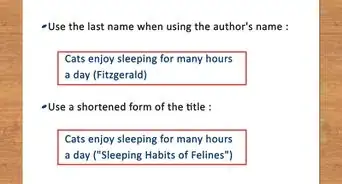
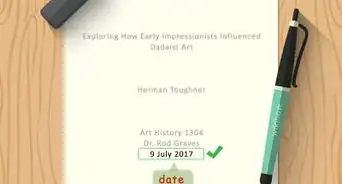




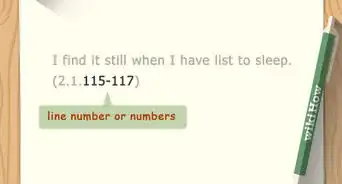
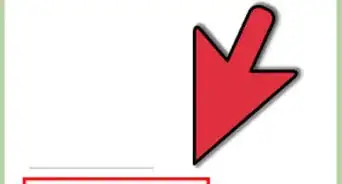
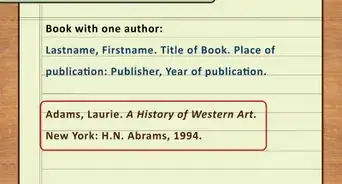

-Step-18.webp)
